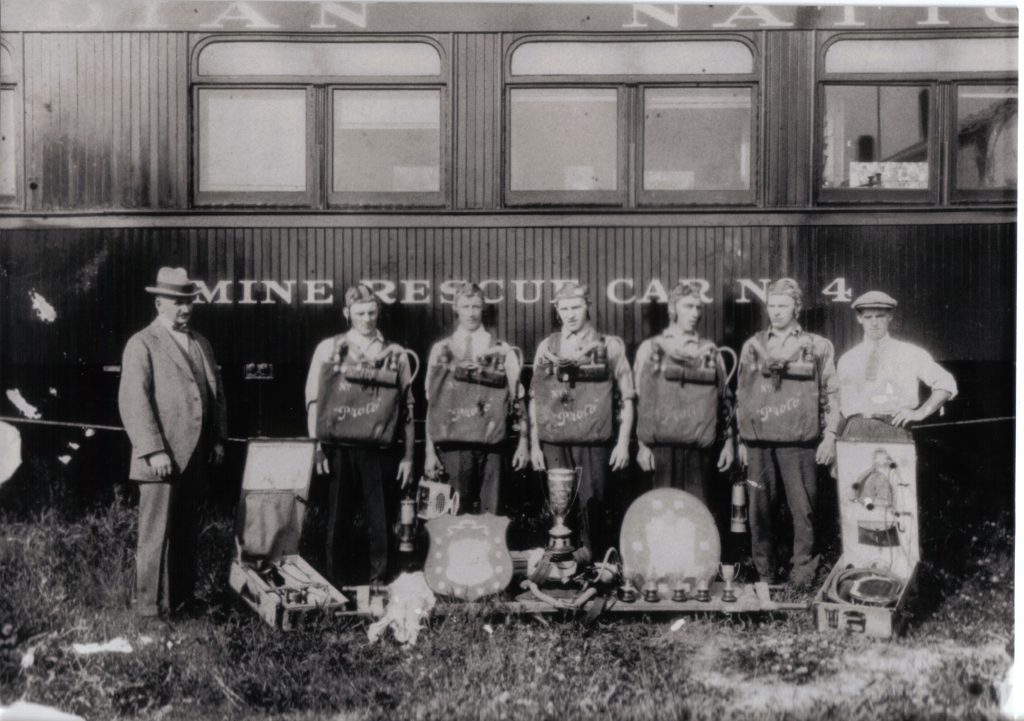The Alberta Labour History Institute collects, preserves, and disseminates the stories of Alberta’s working people and their organizations. This website includes full transcripts, podcasts, and profiles of our interviewees. It also includes videos, booklets, themed essays, annual calendars, and a link to a book created by ALHI. To learn more about us, visit About.
OCCUPATIONAL HEALTH AND SAFETY IN ALBERTA
Interviews Related to Occupational Health and Safety in Alberta
THE INJURIES OF CLASS: ADDICTIONS, MENTAL HEALTH, AND THE WORK WORLD

Mine Rescue Car, Number 4. Courtesy City of Edmonton Archives, CEA-ea-748-1.tif.
INTRODUCTION
by ALVIN FINKEL
“In 2003, six hundred and thirty thousand Canadian adults were injured on the job severely enough to limit their activity. Approximately 300,000 of these injured workers required time off to recover.” (Bob Barnetson, The Political Economy of Workplace Injury in Canada (Athabasca University Press, 2010)
Limited legislation was passed to protect workers in what is now the Province of Alberta in the years before Alberta became a province in 1905. From 1870 to 1905 the settler regions of the Prairies west of Manitoba were organized as the North-West Territories. An employee or their family could sue a company for negligence after an “accident,” but that required finances that most aggrieved individuals and families did not have. Accident is in quotes here because, when an employer makes money by making people work at speeds that make caution difficult or when they fail to provide adequate job orientation or when they fail to take safety measures because it is cheaper to avoid them, “accidents” are events waiting to happen. The word “accident” implies that something is not predictable and no one is to blame. But many so-called accidents should be viewed as something closer to manslaughter by employers. So, here, we will be using the word “incident” to replace “accident.”
There was no workers’ compensation for injured workers or state or employer compensation for families of a worker who died on the job. The one significant exception was the Coal Mines Regulation Ordinance of 1893. It provided safety regulations for ventilation in mines, but no provisions were made for its enforcement.
In 1906, the first Alberta provincial government passed the Coal Mines Act, which created a mines branch to regulate the industry, including ordering mining companies to implement particular safety provisions. But only two people were employed to inspect mines and ensure that safety legislation was complied with. In practice there were few penalties for companies and their owners and managers who failed to comply with the safety rules.
Coal mining was a dangerous industry made even more unsafe when owners ignored safety considerations. Miners were constantly victims of broken backs and bones. Over time most would develop black lung disease from inhaling coal dust. Initially they experienced shortness of breath and coughing. Eventually their lungs turned black and they died slow, painful deaths from their destroyed respiratory system.
Continue reading at the Occupational Health and Safety theme page.
